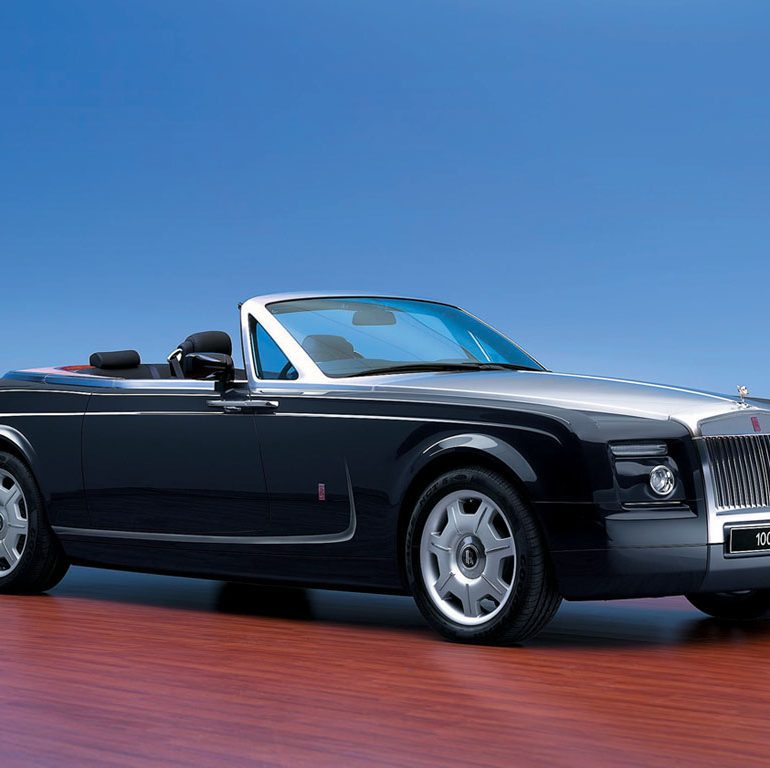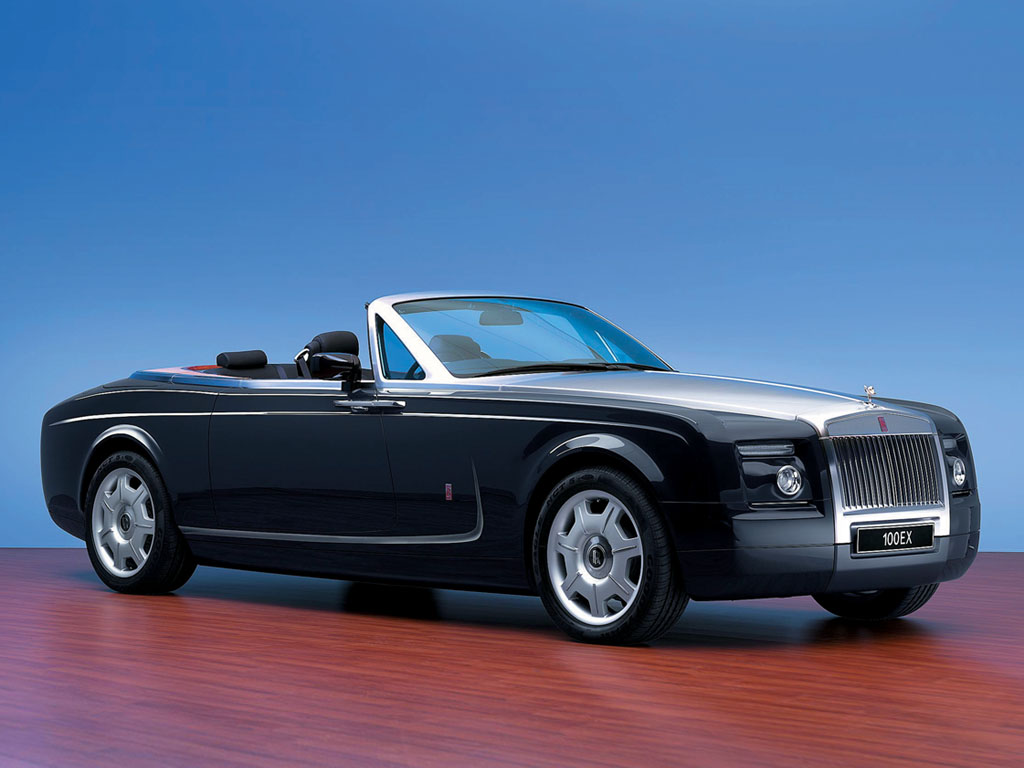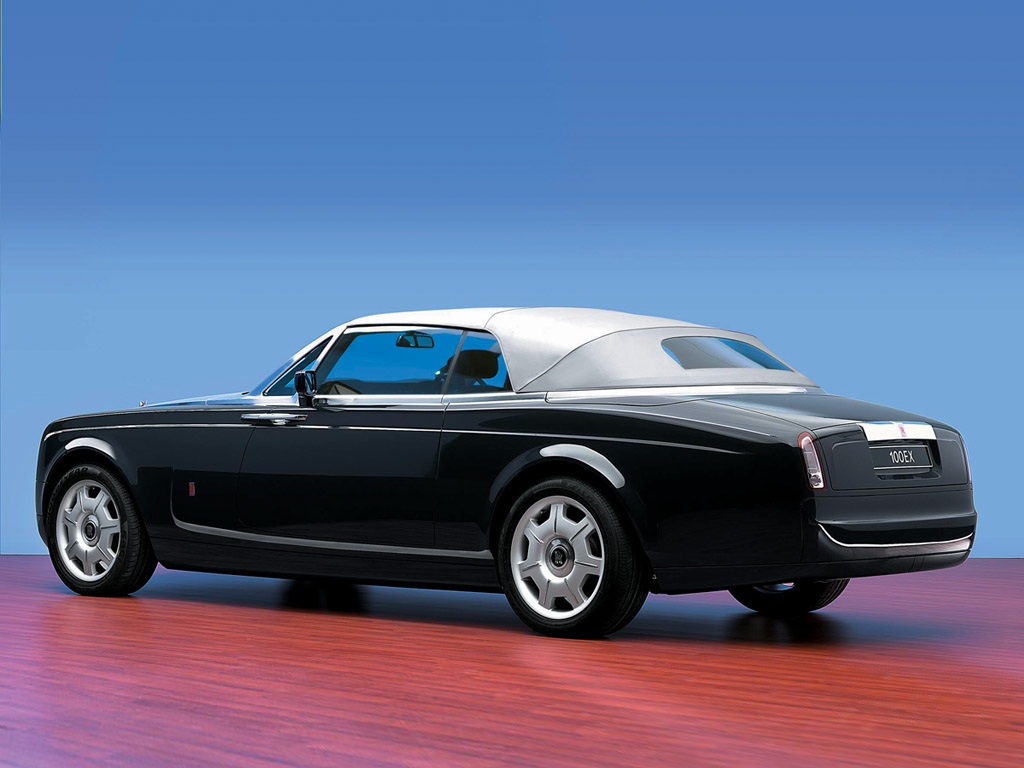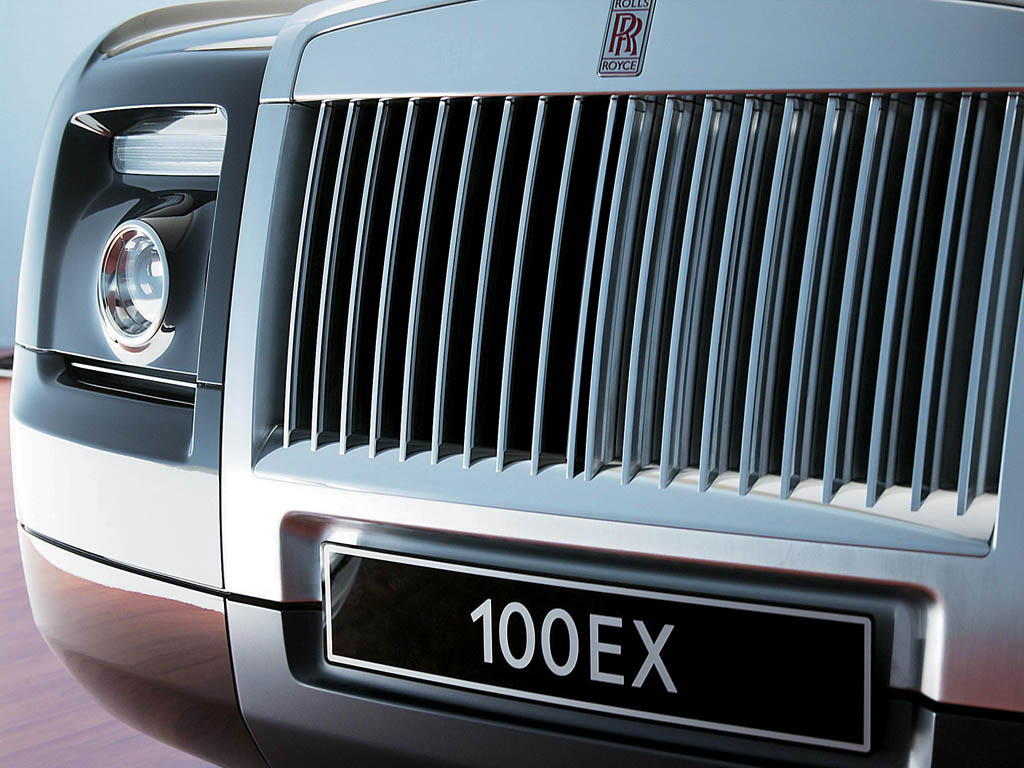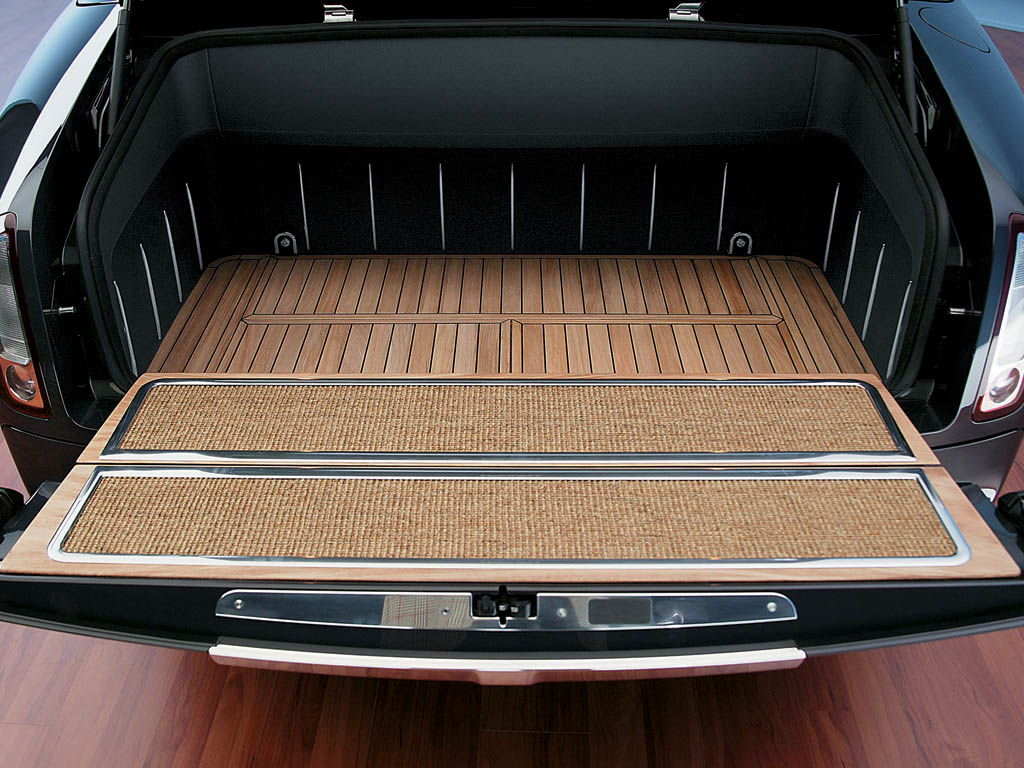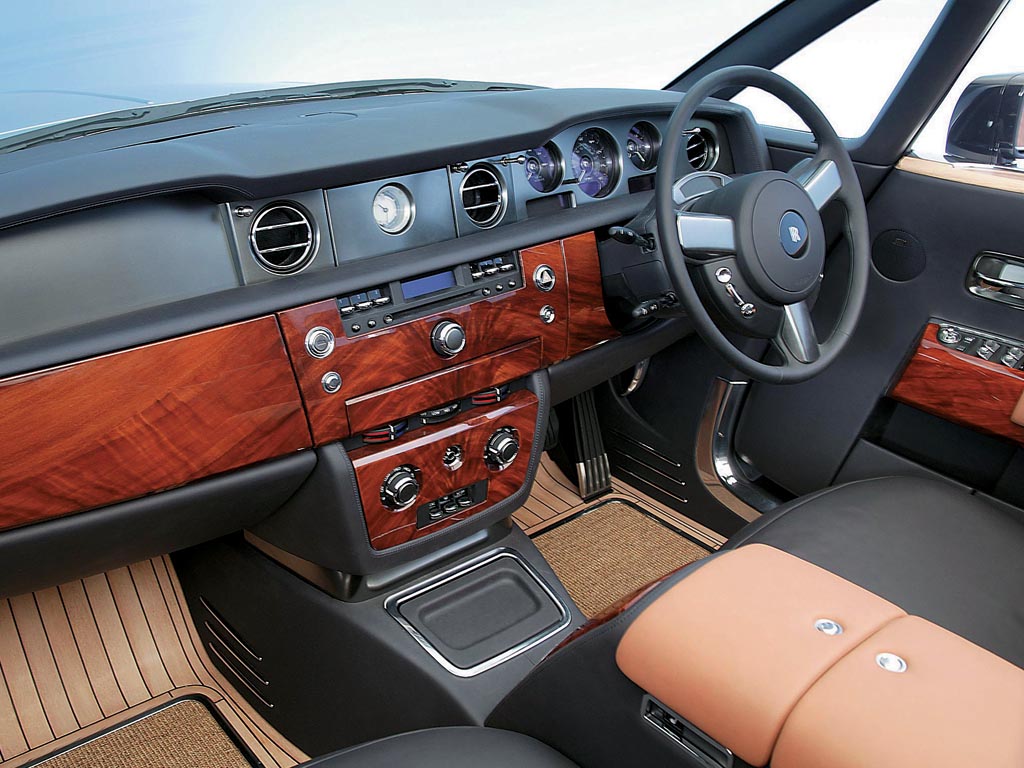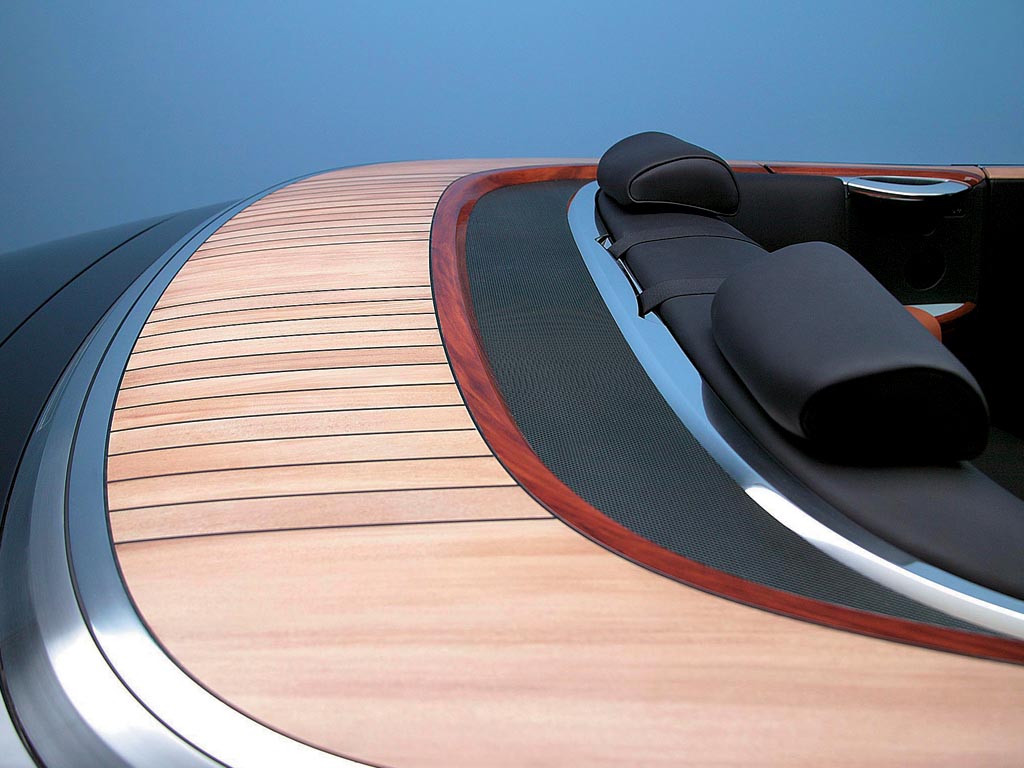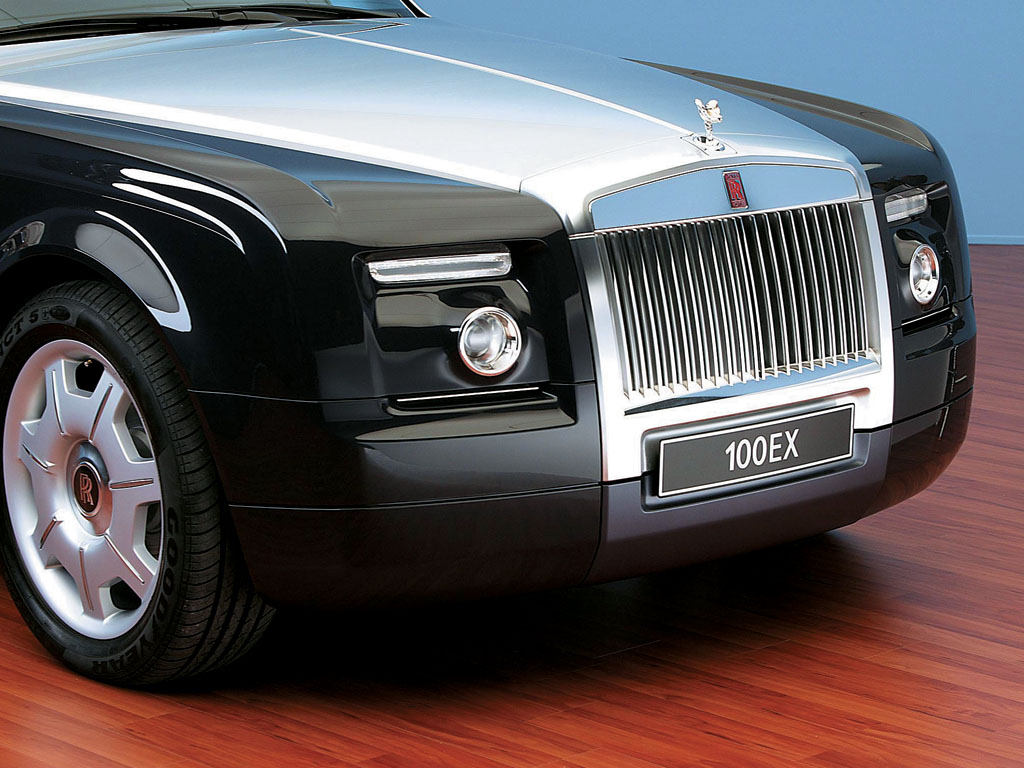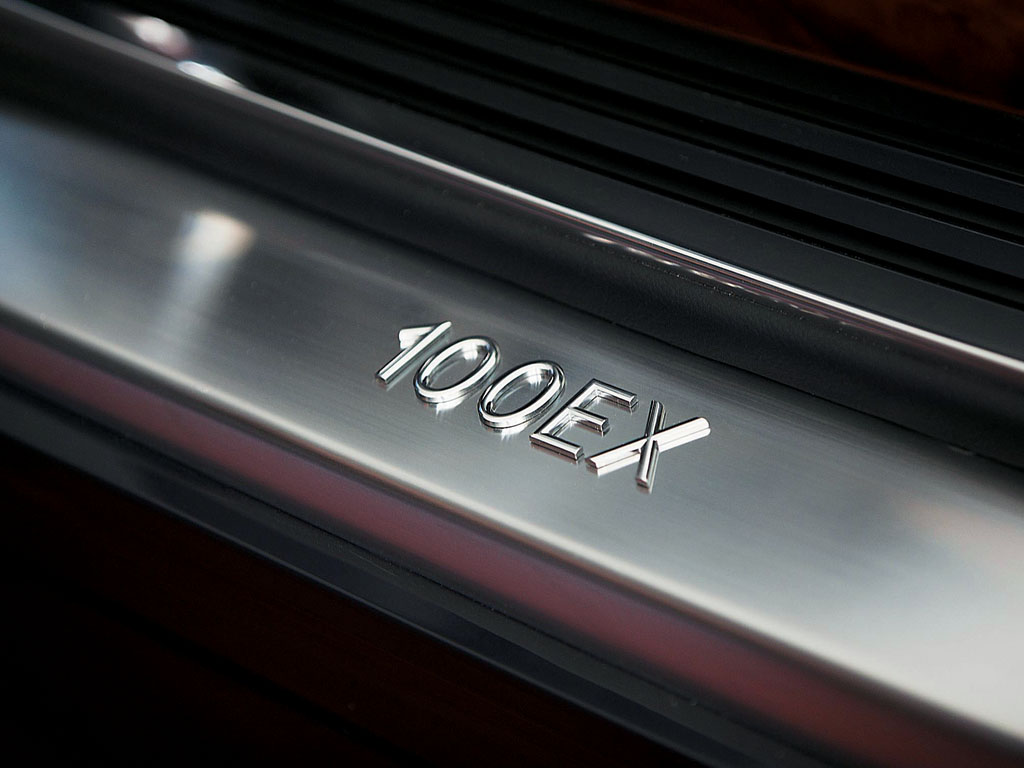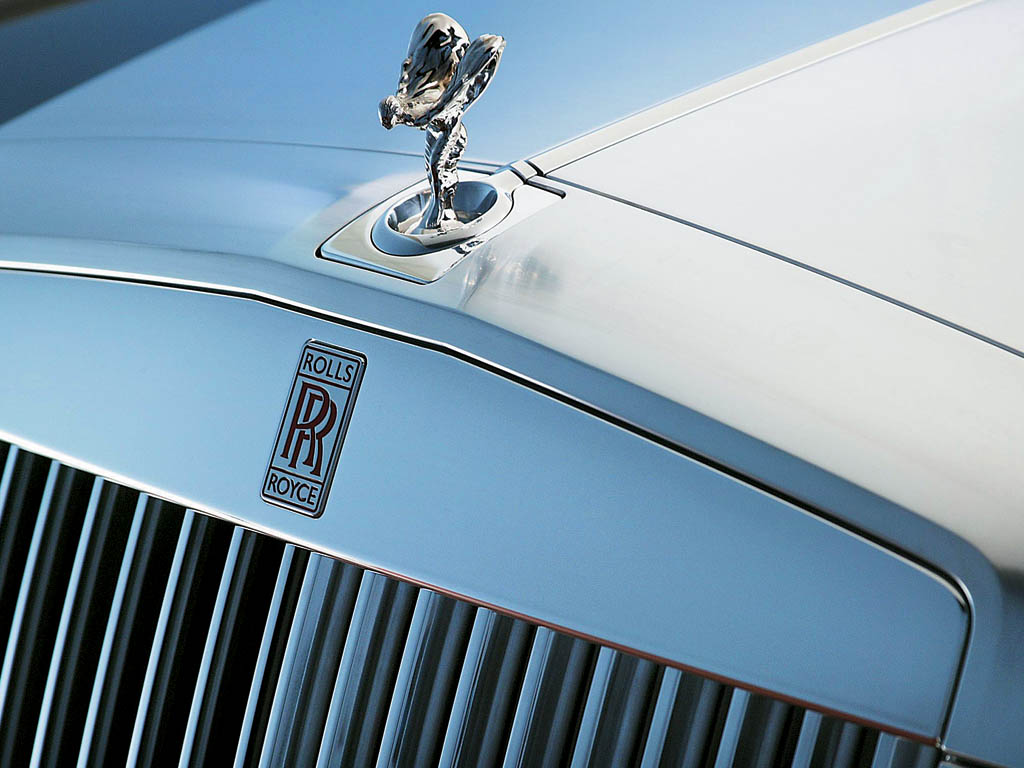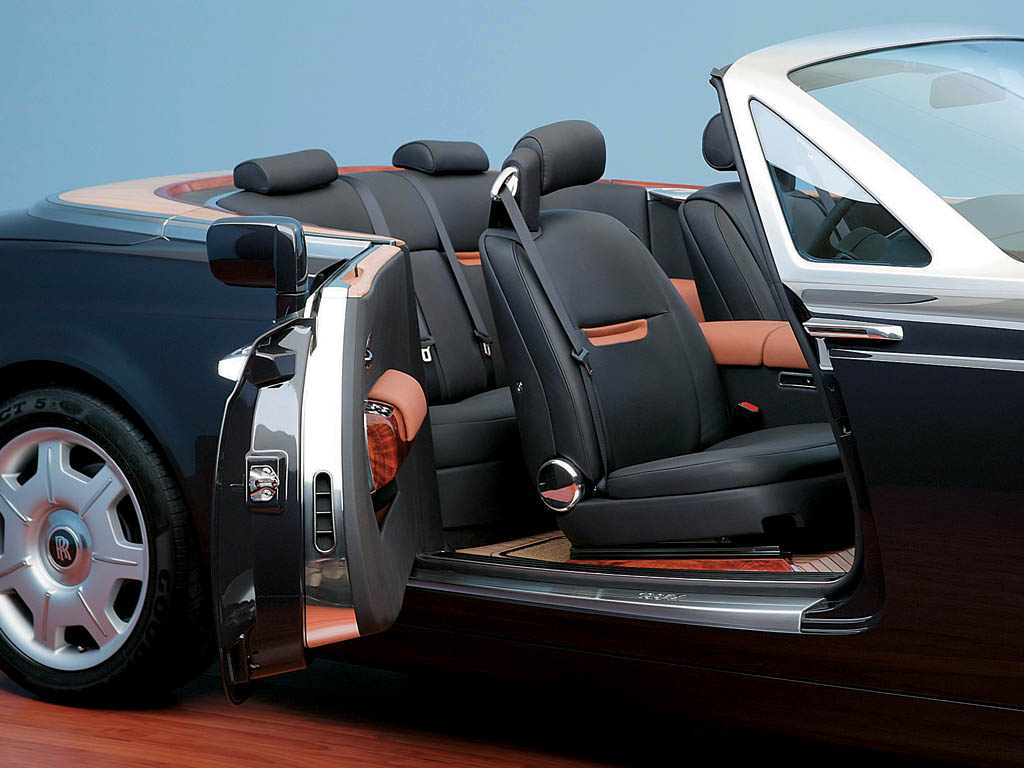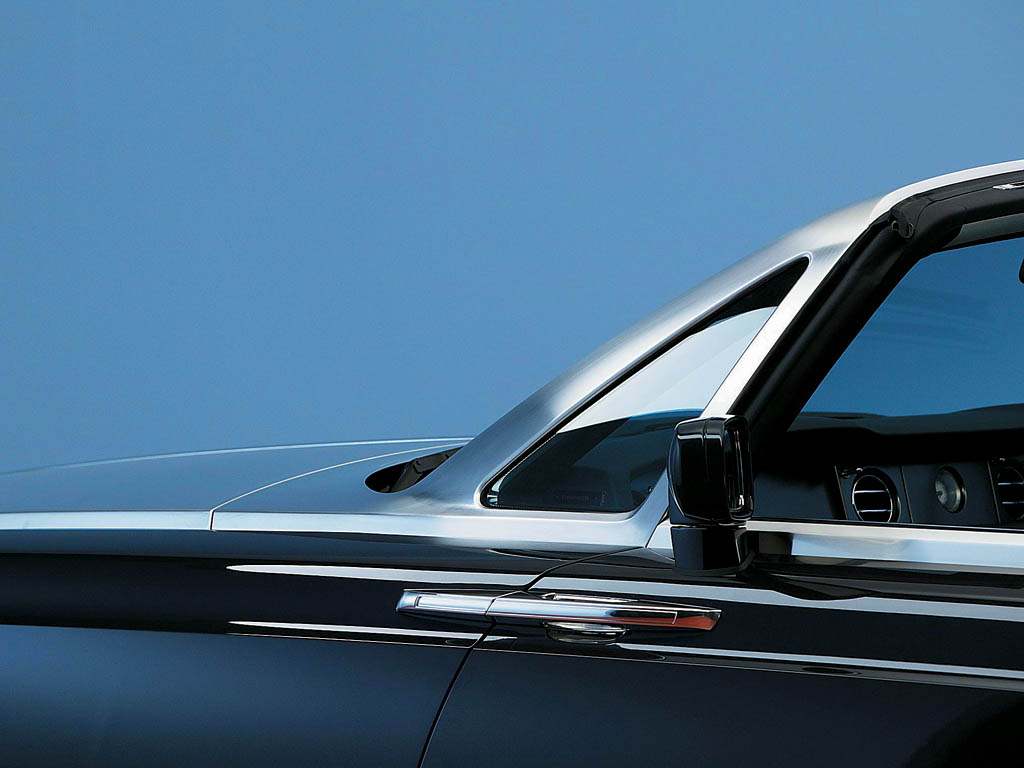2004 Rolls-Royce 100EX Concept
The 100EX is the first Experimental Car to be produced by Rolls-Royce Motor Cars since BMW Group became the custodians of the marque in 1998 and launched the all-new Phantom at the company’s new home in Goodwood in January 2003.
Based on a lightweight aluminium space-frame, this open-top, four-seat, two-door drophead has been designed and produced to celebrate the 100-year anniversary of Rolls-Royce, which falls in May 2004. There is no plan to produce it as a series model.
Experimental models have long been a feature of Rolls-Royce, particularly between 1919 and 1957 when a number of motor cars were given the EX name. Unlike a concept car, an experimental car functions more fully and was originally used by Rolls-Royce to test and evaluate new systems, components and features.
While the design of the 100EX and the choice of its special construction materials resonate strongly with Rolls-Royce tradition, both its aesthetic qualities and its technological content place it squarely in the 21st century. A strong nautical theme runs throughout, with bleached teak decking featuring both inside and outside the car. Polished aluminium also features heavily, particularly on the bonnet and windscreen surround, while the composite body is finished in Dark Curzon.
Design
”We intended the silhouette to express the performance potential, yet reflect the effortless composure typical of Rolls-Royce design rather than the aggressive, forward-wedged stance of most modern performance cars,” explained Exterior Designer, Marek Djordjevic.
To emphasise the bodylines, a polished aluminium waist rail surrounds the passenger compartment. Hand crafted, bleached teak decking has been chosen to feature both inside and outside the car, forming part of a strong maritime theme that runs throughout. On the exterior it forms a tonneau cover for the folded hood and features as an inlay in the polished aluminium door cappings.
At the front, a solid silver Spirit of Ecstasy sits on a progressively rakish version of the traditional Rolls-Royce grille, blending into the dramatic bonnet which has been milled from a single aluminium block and brushed to a high sheen. The windscreen surround and A-pillar, triangulated for exceptional strength, is also machined from solid aluminium.
The two coach doors of 100EX demonstrate the marriage of form and function throughout the car. They are large enough to allow exceptional access for rear-seat passengers, hinged at the rear in the style of many exceptional pre-war touring cars and like the rear doors of the new Phantom.
Interior
The chosen interior wood veneer is figured mahogany. Upholstery and trim are in rich Dark Curzon leather, while the flooring features the same bleached teak decking as the tonneau cover for the folded hood.
Specially-designed front seats are included, which are ultra-supportive but slender, allowing good legroom for rear passengers. The rear seat itself, while more intimate than that in the Phantom, is extremely accommodating for two people, with generous space devoted to passenger comfort, helped by the neat and space-efficient folding roof mechanism.
Engineering
As an experimental car, the 100EX is developed to a far higher level of engineering than a typical concept car. The body structure is a development of the new Phantom’s aluminium space-frame, adapted to the different proportions of the 100EX, which is similar in width to the Phantom, but 6.5 inches (165) mm shorter and 3 inches (71 mm) lower. The wheelbase is 4 inches (100 mm) shorter.
The structure gives the 100EX immense strength and rigidity – something which is clearly vital for an open-top motor car. It also allows for coach doors to be selected, which are integral to the design of the motor car and offer the practical benefit of easing entry and exit. The polished aluminium windscreen surround, with its triangulated A-pillar, is effectively an exposed part of the space-frame structure, which provides excellent roll-over protection.
100EX is powered by a 9-litre V16, 64-valve engine. Natural aspiration was chosen over turbo or supercharging to give the instant, yet perfectly smooth style of pick-up which has so impressed in the Phantom. Drive is delivered through a six-speed automatic gearbox.
In Detail
| submitted by | Richard Owen |
| engine | V16 |
| valvetrain | 4 Valves per Cyl |
| displacement | 9000 cc / 549.2 in³ |
| front tires | 255/50/R21 |
| rear tires | 285/45/R21 |
| f brake size | mm / in |
| r brake size | mm / in |
| front wheels | F 53.3 x 21.6 cm / 21 x 8.5 in |
| rear wheels | R 53.3 x 22.9 cm / 21 x 9 in |
| steering | Rack & PInion w/Varible Assistance |
| curb weight | Double Wishbones w/Air Springs kg / Multi-Link w/Air Springs lbs |
| wheelbase | 3470 mm / 136.6 in |
| length | 5669 mm / 223.2 in |
| width | 1990 mm / 78.3 in |
| height | 1561 mm / 61.5 in |
| transmission | 6-Speed Auto |
| gear ratios | :1 |


